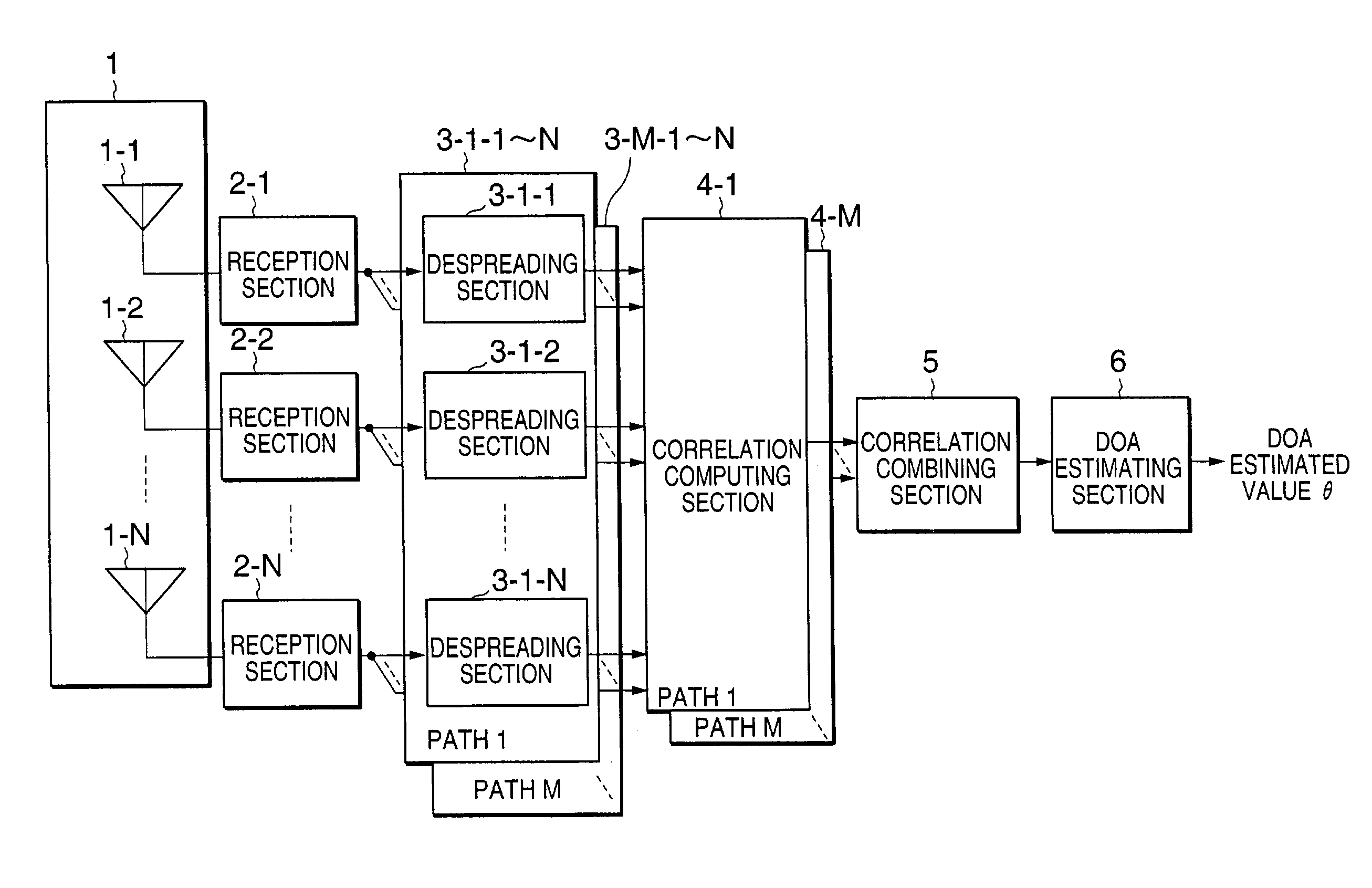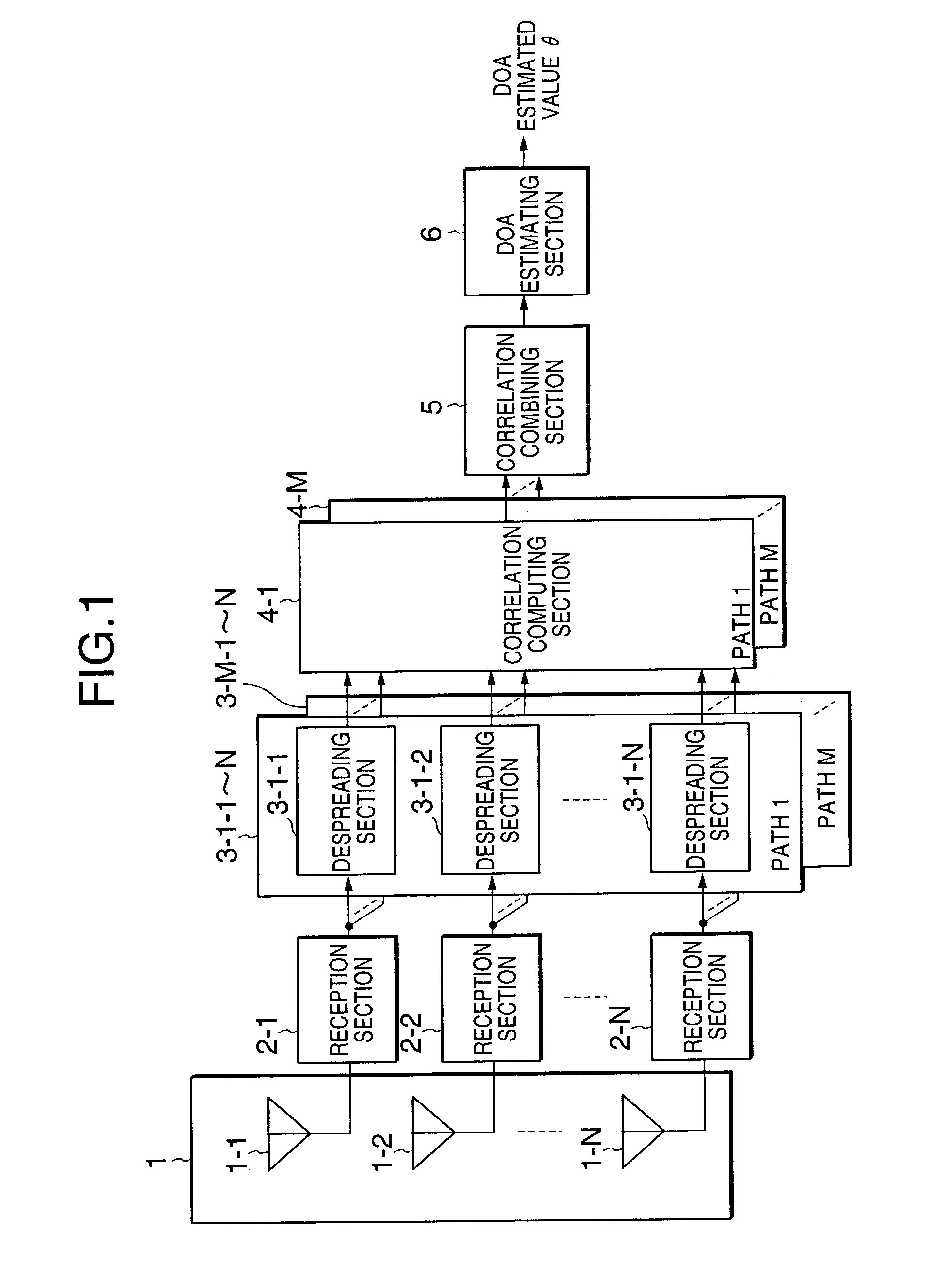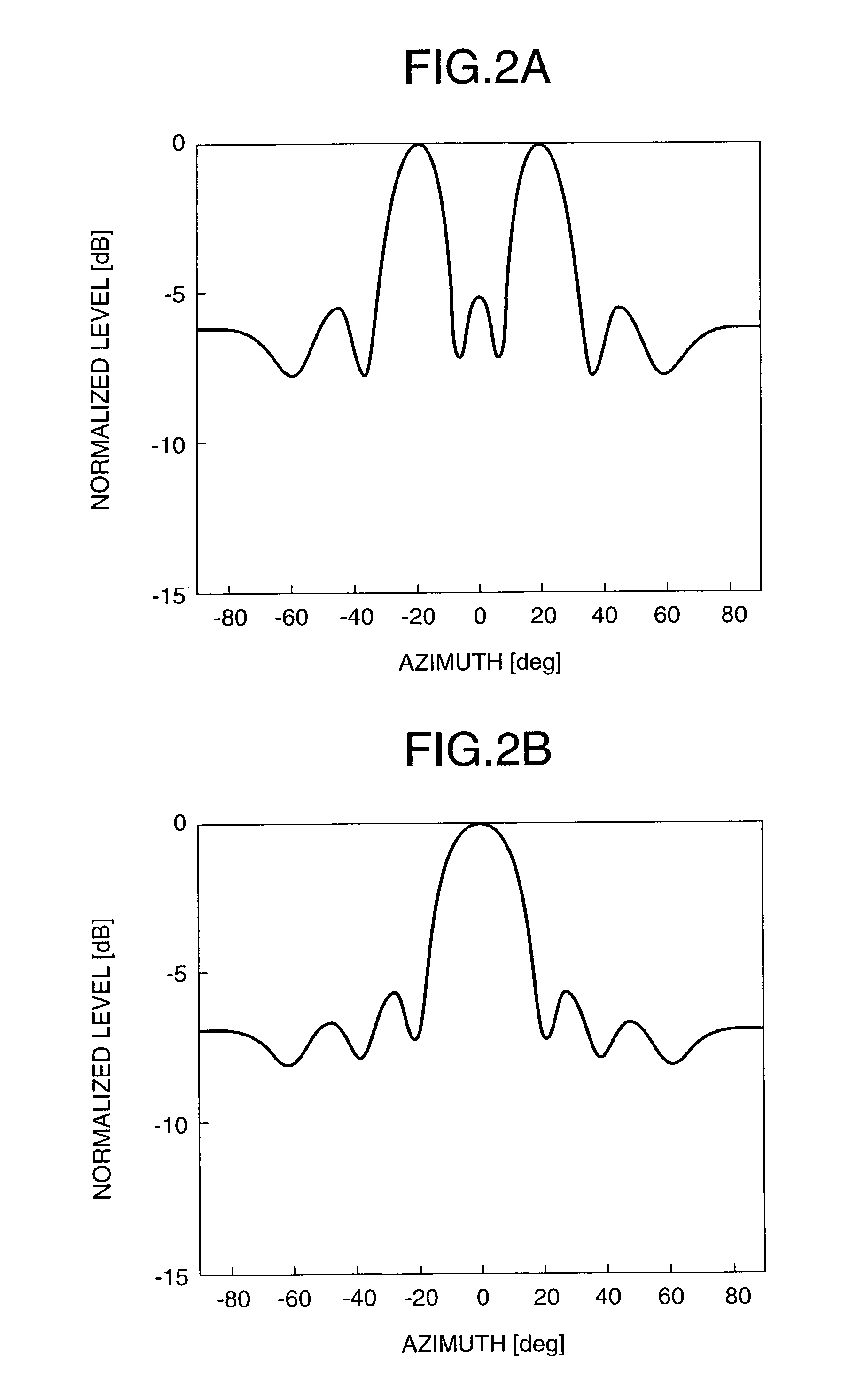Adaptive antenna base station apparatus
a base station and antenna technology, applied in the field of base station apparatus, can solve the problems of increasing the scale of the apparatus, affecting the reception quality, and increasing the computation amount of the conventional adaptive antenna base station apparatus, so as to suppress the interference of other path components, reduce computation and apparatus scale, and suppress correlation components
- Summary
- Abstract
- Description
- Claims
- Application Information
AI Technical Summary
Benefits of technology
Problems solved by technology
Method used
Image
Examples
first embodiment
(First Embodiment)
[0039]FIG. 1 is a block diagram showing the structure of an adaptive antenna base station apparatus according to the first embodiment of the invention, which comprises an array antenna 1, reception sections 2-1 to 2-N, despreading sections 3-1-1 to 3-1-N, . . . , and 3-M-1 to 3-M-N, correlation computing sections 4-1 to 4-M, a correlation combining section 5 and a DOA (Direction-Of-Arrival) estimating section 6. Those components will be discussed in detail.
[0040]The array antenna 1 receives code-multiplexed high-frequency signals at the N antenna elements 1-1 to 1-N, inputs the signals to the reception sections 2-1 to 2-N respectively provided in the antenna elements 1-1 to 1-N, performs high-frequency amplification, frequency conversion, orthogonal detection and A / D conversion in order and inputs the resultant signals to the despreading sections 3-1-1 to 3-1-N, . . . , and 3-M-1 to 3-M-N.
[0041]The despreading sections 3-1-1 to 3-1-N, . . . , and 3-M-1 to 3-M-N per...
second embodiment
(Second Embodiment)
[0054]FIG. 3 is a block diagram showing the structure of an adaptive antenna base station apparatus that forms a reception directive beam based on the result of estimation done in a DOA estimating section 6 according to the second embodiment of the invention. The apparatus comprises an array antenna 1, reception sections 2-1 to 2-N, despreading sections 3-1-1 to 3-1-N, . . . , and 3-M-1 to 3-M-N, correlation computing sections 4-1 to 4-M, a correlation combining section 5, a DOA estimating section 6, beamforming sections 7-1 to 7-M, a Rake combining section 8 and a data determining section 9. The following will mainly discuss what differs from the first embodiment.
[0055]The operation up to the acquisition of a DOA estimated value by the DOA estimating section 6 based on the signals received by the array antenna 1 is similar to that of the first embodiment. In the second embodiment, however, the DOA estimating section 6 detects only the direction that shows the hig...
third embodiment
(Third Embodiment)
[0064]FIG. 4 is a block diagram showing the structure of an adaptive antenna base station apparatus that adaptively forms a transmission directivity based on the result of estimation done in the DOA estimating section 6 of the first embodiment. The apparatus comprises an array antenna 1, reception sections 2-1 to 2-N, despreading sections 3-1-1 to 3-1-N, . . . , and 3-M-1 to 3-M-N, correlation computing sections 4-1 to 4-M, a correlation combining section 5, a DOA estimating section 6, beamforming sections 7-1 to 7-M, a modulating section 20, a transmission beamforming section 21, spreading sections 22-1 to 22-N and transmission sections 23-1 to 23-N. The following will mainly discuss what differs from the first embodiment.
[0065]The operation up to the acquisition of a DOA estimated value by the DOA estimating section 6 based on the signals received by the array antenna 1 is similar to that of the first embodiment.
[0066]The modulating section 20 modulates transmiss...
PUM
 Login to View More
Login to View More Abstract
Description
Claims
Application Information
 Login to View More
Login to View More - R&D
- Intellectual Property
- Life Sciences
- Materials
- Tech Scout
- Unparalleled Data Quality
- Higher Quality Content
- 60% Fewer Hallucinations
Browse by: Latest US Patents, China's latest patents, Technical Efficacy Thesaurus, Application Domain, Technology Topic, Popular Technical Reports.
© 2025 PatSnap. All rights reserved.Legal|Privacy policy|Modern Slavery Act Transparency Statement|Sitemap|About US| Contact US: help@patsnap.com



